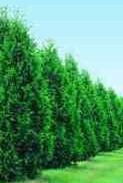 When you want to block a view or create privacy an evergreen hedge is a great solution. You accomplish your purpose while adding an attractive feature to the landscape. Those who live in mild climates, zone 7 and warmer, have a large number of broadleaf evergreens to choose from, while those who live further north can turn to a rich selection of coniferous plants. Most of these are trees that can be kept trimmed to form a handsome hedge or screen.
When you want to block a view or create privacy an evergreen hedge is a great solution. You accomplish your purpose while adding an attractive feature to the landscape. Those who live in mild climates, zone 7 and warmer, have a large number of broadleaf evergreens to choose from, while those who live further north can turn to a rich selection of coniferous plants. Most of these are trees that can be kept trimmed to form a handsome hedge or screen.
Almost any tree or shrub can be kept small and used in a hedge as long as it is pruned frequently enough to keep it attractive and in hedge form. Some plants take this pruning better than others. The following plants respond well to pruning and make good hedges.
 White Fir (Abies concolor)
White Fir (Abies concolor)
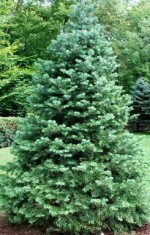 Noted for being more heat and drought tolerant than other firs, white fir also has the longest needles that give it a softer look. Under good conditions it can grow 1.5’ per year but can be sheared.
Noted for being more heat and drought tolerant than other firs, white fir also has the longest needles that give it a softer look. Under good conditions it can grow 1.5’ per year but can be sheared.
-
Height: 120’
Light: Sun to light shade
Soil: Average, moist, well-drained
Hardiness: Zones 3-7
 Sawara False Cypress (Chamaecyparis pisifera)
Sawara False Cypress (Chamaecyparis pisifera)
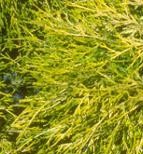 There are so many popular varieties of this plant that the species is hardly seen anymore. One group has thread-like stems, the other short, fluffy, twisted needles. Colors may be yellow, gold, or bluish green.
There are so many popular varieties of this plant that the species is hardly seen anymore. One group has thread-like stems, the other short, fluffy, twisted needles. Colors may be yellow, gold, or bluish green.
-
Height: Most cultivars 3-20’
Light: Full sun to part shade
Soil: Average, moist, well-drained, neutral to slightly acidic, but tolerates less
Hardiness: Zones 3-7
 Eastern White Pine (Pinus strobus)
Eastern White Pine (Pinus strobus)
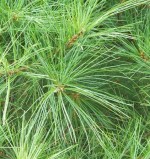 The soft, flexible needles of white pine give the tree a delicate look that is unsurpassed among pines. As the tree grows (1 foot a year in good soil), it becomes more attractive and picturesque. It can be pruned but the cuts must not be made where the stem has no needles or the tree will become unsightly until new growth covers the dead twigs that result. It is easily transplanted.
The soft, flexible needles of white pine give the tree a delicate look that is unsurpassed among pines. As the tree grows (1 foot a year in good soil), it becomes more attractive and picturesque. It can be pruned but the cuts must not be made where the stem has no needles or the tree will become unsightly until new growth covers the dead twigs that result. It is easily transplanted.
-
Height: 100-150’
Light: Sun
Soil: Average, moist, well-drained, slightly acidic
Hardiness: Zones 3-8
 Japanese Yew (Taxus cuspidata)
Japanese Yew (Taxus cuspidata)
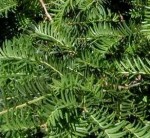 Japanese yews show many variations in size and shape, and several excellent varieties are available including dwarfs and ones with a yellow tinge on the needles. The needles are a lustrous dark green and female plants produce red berries attractive to birds.
Japanese yews show many variations in size and shape, and several excellent varieties are available including dwarfs and ones with a yellow tinge on the needles. The needles are a lustrous dark green and female plants produce red berries attractive to birds.
-
Height: 3-40’ depending on variety
Light: Sun to shade
Soil: Average, moist, well-drained, slightly acidic
Hardiness: Zones 4-7
 American Arborvitae (Thuja occidentalis)
American Arborvitae (Thuja occidentalis)
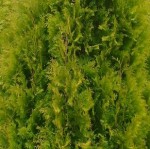 There are many good American arborvitaes that are great garden plants. They are generally slow growing, shrub-like, and do well in areas of high atmospheric moisture. For a tall, fast growing hedge or screen ‘Green Giant’ is a good choice in zones 5 to 8. It can grow 3-4’ in a single season but can be kept compact by pruning.
There are many good American arborvitaes that are great garden plants. They are generally slow growing, shrub-like, and do well in areas of high atmospheric moisture. For a tall, fast growing hedge or screen ‘Green Giant’ is a good choice in zones 5 to 8. It can grow 3-4’ in a single season but can be kept compact by pruning.
-
Height: 3-60’ depending on variety
Light: Full sun but tolerate some shade
Soil: Fertile, moist
Hardiness: Zones 2-8 depending on the variety
Many evergreen confers make excellent hedges and some are especially adapted to cold climates. Although several of the plants described above are trees rather than shrubs they can be kept compact by judicious pruning. When choosing plants for a hedge, check the hardiness zones as well as their light and soil requirements to maximize the chances of success.
